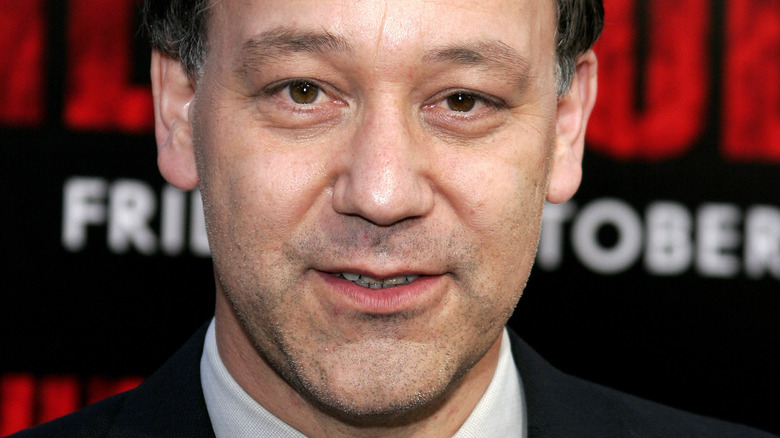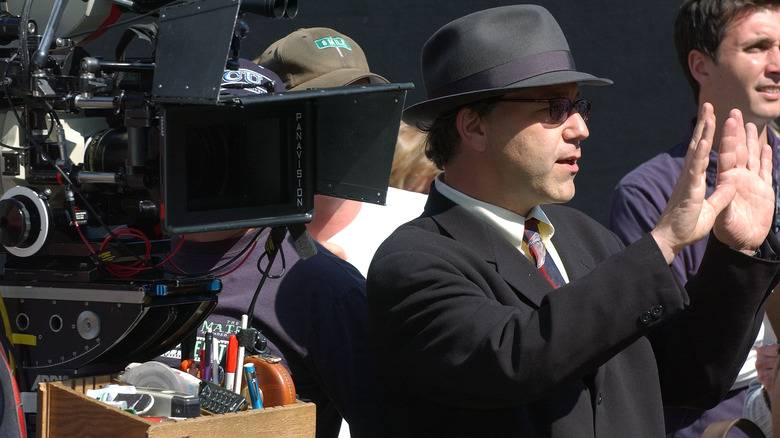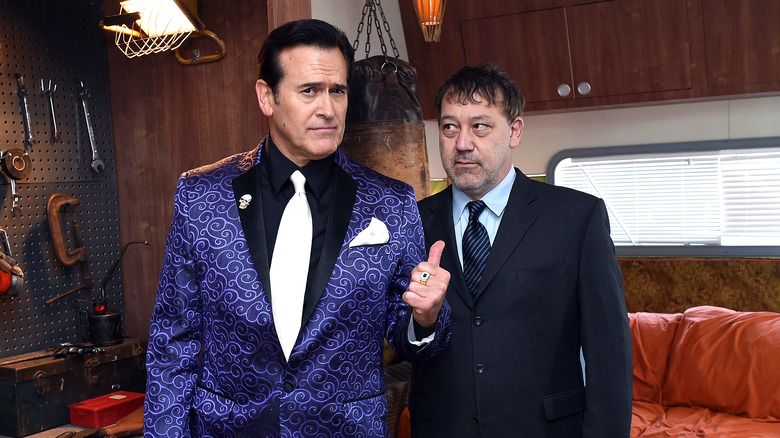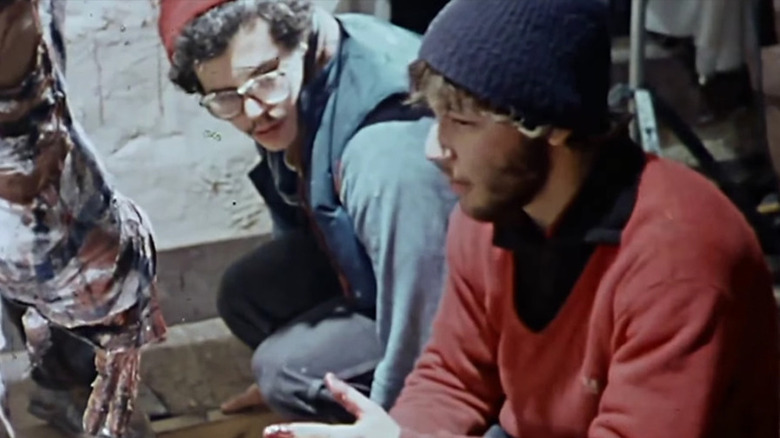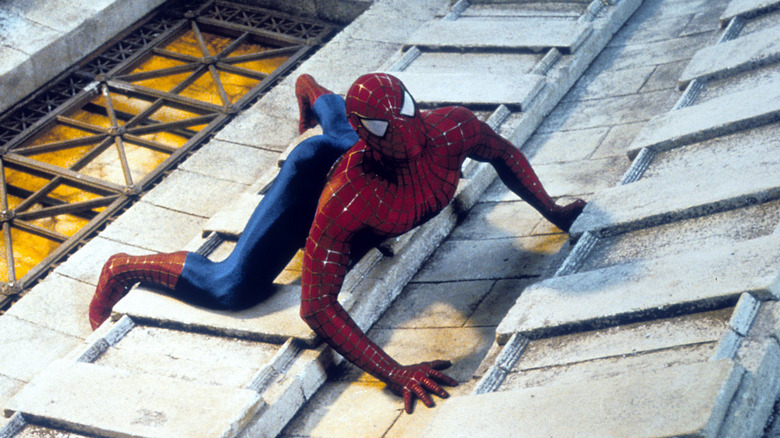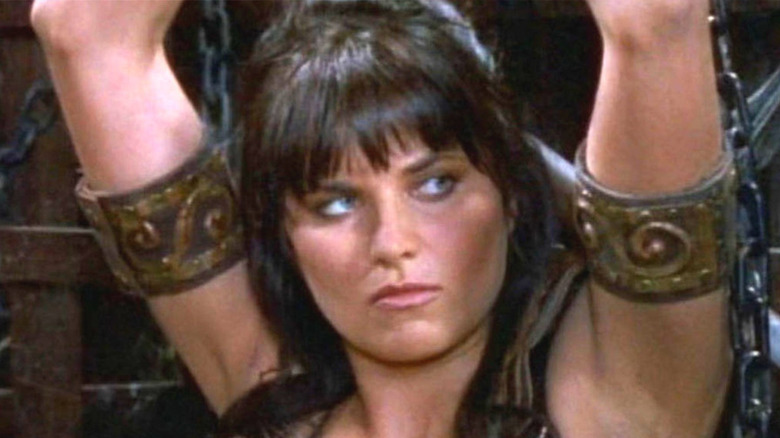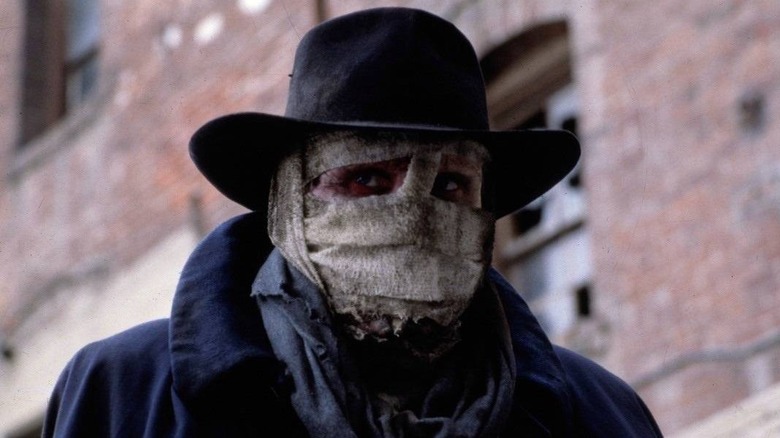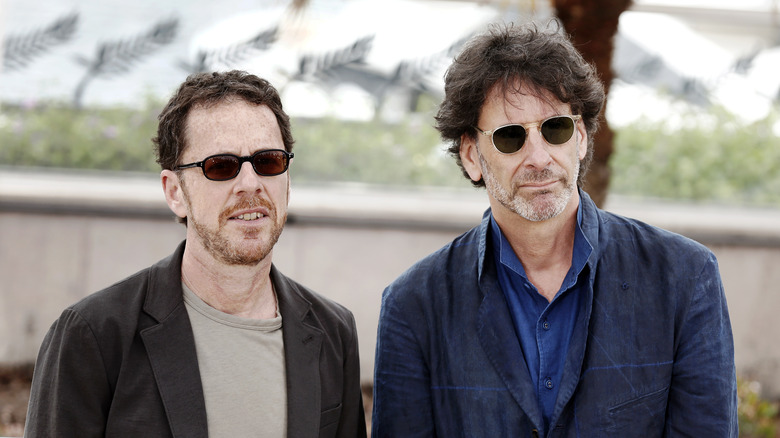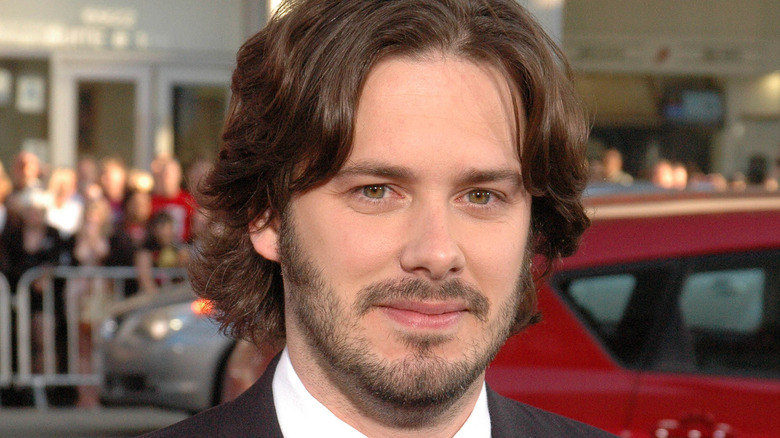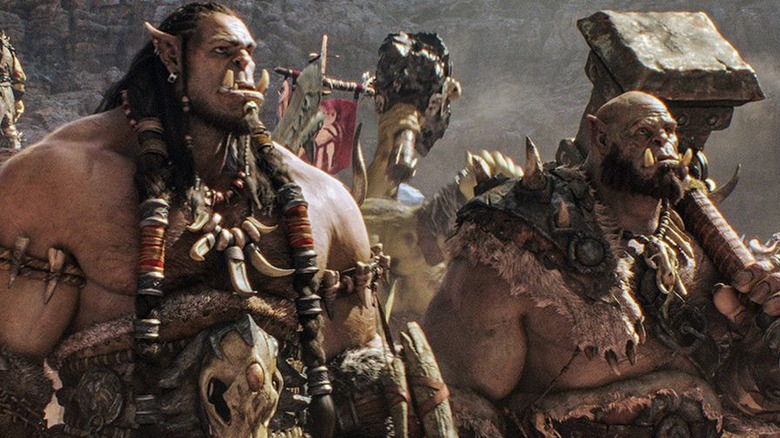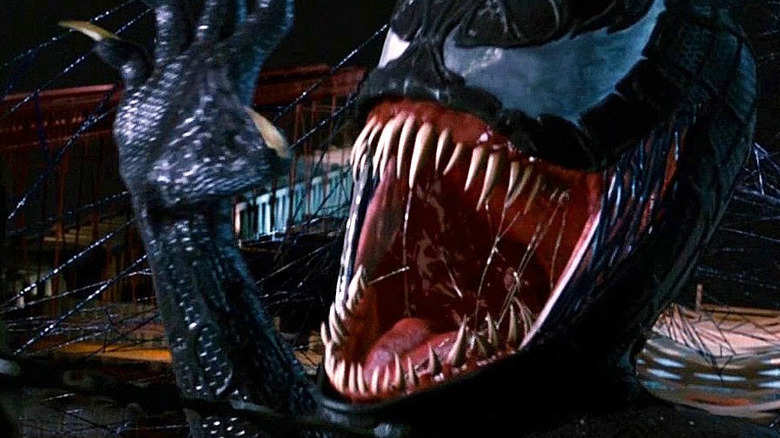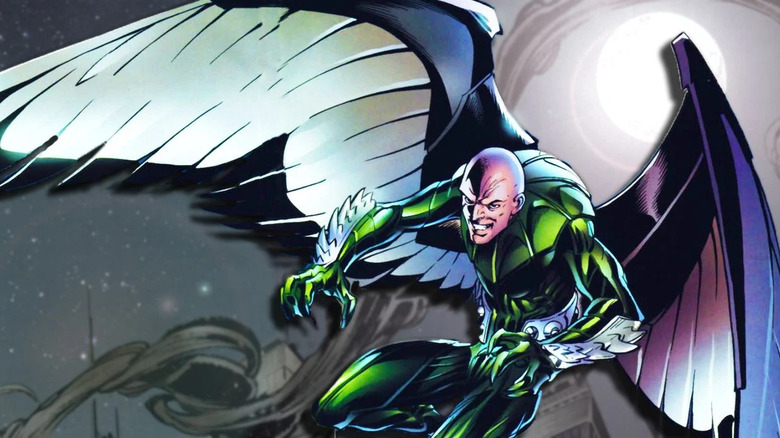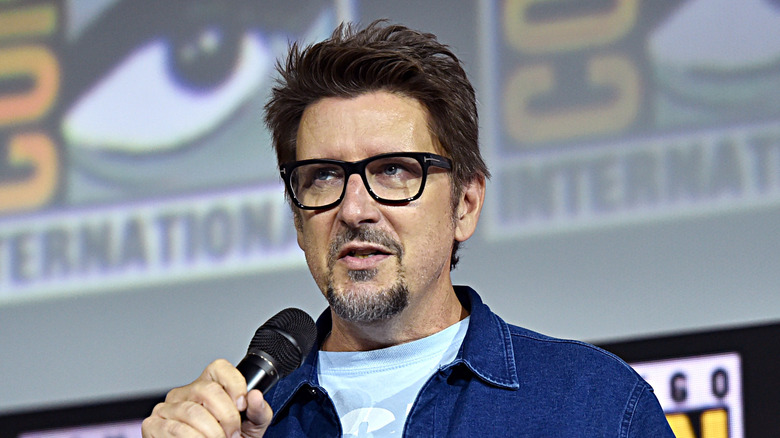The Untold Truth Of Sam Raimi
In the annals of cinema history it would be challenging to find a director with more hardcore fans than Sam Raimi. This is understandable, as the man has fingerprints all over some of pop culture's most beloved cinematic and televised franchises. From creating a cult phenomenon with the "Evil Dead" series to revolutionizing the superhero genre with the first "Spider-Man" trilogy, Raimi's filmography is beloved by many.
Many filmmakers such as Edgar Wright ("Last Night in Soho") and David Yarovesky ("Nightbooks") have mentioned being heavily influenced and inspired by Raimi's style of filmmaking. This is understandable as Raimi can be credited for many modern filmmaking innovations with his DIY and hands-on directing style. If you've watched a horror or action film in the last few decades there is a good chance many of them were Raimi-inspired. Here are a few facts and intriguing aspects about Sam Raimi that will shed a better light on his immense influence.
His career origins are very humble
Is there a filmmaker with more humble origins than Sam Raimi? Even from an early age the would-be director was a goofball with a natural inclination towards creativity. A young Raimi was first introduced to filmmaking through a Super 8 camera procured by his older brother and father. It would be in these formative years growing up in the suburbs of Detroit that Raimi would discover his life's calling — filmmaking. Much of his early work was heavily inspired by the physical humor of vaudeville – most notably "The Three Stooges." This slapstick influence would remain a constant throughout his most noteworthy and visually dynamic films.
Raimi spent much of his high school years making homegrown feature films – via the Super 8 camera — with his brother and friends. It would be here that Raimi would begin experimenting with the creative camerawork he'd become known for. These small town origins would culminate in Raimi writing a nifty little horror screenplay titled "The Book of the Dead," the seed that would eventually bloom into the "Evil Dead" Franchise. It's inspiring for any young filmmaker to know that all you really need to make movies are a camera, perseverance and good friends.
He has very supportive friends
As we mentioned before, Sam Raimi's filmmaking goals had support from his friends, specifically Rob Tapert and Bruce Campbell. Both men would play a major role in Raimi's early filmmaking career and would remain by his side for many years to come. Campbell was often the perfect leading man given his natural good looks and appeal to the opposite sex. Meanwhile, Raimi met Tapert while the latter was roommates with Ted Raimi, Sam's brother, and the two began a filmmaking friendship. The trio would eventually band together on several of Sam's early movies — all in pursuit of the big time.
In terms of "going all in," both men certainly believed in their friend's idea. All three of them –- Raimi, Campbell and Tapert — dropped out of college and purchased fancy suits. Driven by the lack of good horror content in drive-ins at the time, the trio were convinced they could make a better movie, which led to them seeking funding for their own. After an arduous fundraising process the trio eventually raised enough to produce a proof of concept short film known as "Within the Woods." This would of course be the lynchpin to securing larger financing for what would eventually become "The Evil Dead." This youthful gamble would work out well, with all three men moving onto bigger and brighter futures in entertainment both on and behind the camera.
He's always found unique solutions for problems
If you listen to just about any commentary track for an independent film then you'll likely be regaled with a plethora of horror stories. From equipment failures to difficulties with special effects to dealing with last minute recasting — filmmaking is often a three-ring circus of chaos. Whether it be inventive handling of an on-set issue or just taking matters into his own hands, Sam Raimi has always been hands-on. He worked around the clock in order to finish "The Evil Dead," often at the expense of sleep.
In many home media commentary tracks for the film, several of Raimi's solutions for certain complicated shots are elaborated on. The film's sinister opening — shown from the perspective of the evil entity — seamlessly glides over a murky lake. This effect was achieved by Raimi holding the camera in a small boat while being pushed to the other side. It was an impressive solution, and just one of the many innovative camera movements utilized on set to achieve creative shots on a low budget. Often when filmmakers are hit with restrictions and complications it can result in innovation, with Sam Raimi being definite proof of that.
He wasn't originally going to direct Spider-Man
It's almost impossible to imagine anyone other than Sam Raimi being in the driver's seat for the now iconic 2000s "Spider-Man" trilogy. Despite their inherent campiness, the films are still rightfully hailed as modern classics for their vibrant cinematography and lovable performances. The film was in "development hell" for decades prior to its eventual release in 2002, going through many changes and revisions. Many directors –- including James Cameron, Barry Sonnenfeld, Michael Bay, Chris Columbus and David Fincher — were at one time in line to direct the future blockbuster.
Then-Columbia Pictures head and current Spider-Man producer Amy Pascal would eventually place Raimi -– a devout fan of "Spider-Man" — in the director's chair. As stated in a 2002 HBO documentary for the film, it was Raimi's appreciation and enthusiasm for the character that helped finalize him getting the job. After being handed the reins Raimi – aided by screenwriters David Koepp and Scott Rosenberg – would begin to restructure the film. Through these changes the project would eventually become the movie we all know and love today, due in major part to Raimi's trademark style.
He's been involved in several major television shows
Sam Raimi has not only created memorable content for the big screen, but he's brought his unique style to the small screen as well. His venture into TV began with the short-lived science fiction series "M.A.N.T.I.S," starring Carl Lumbly. The series had a very high concept, but due to low ratings and a constantly fluctuating narrative it wouldn't go past one season. That would be a drop in the bucket compared to the next project he'd help develop, "Xena: Warrior Princess."
The series –- a spin-off of "Hercules: The Legendary Journeys" –- focused on Xena (Lucy Lawless), the titular warrior princess who would travel across the land righting wrongs. Built upon various bits of folklore and Greek mythology, the series had everything from high adventure and melodrama to hysterical slapstick comedy. Even today "Xena" still maintains a devout cult fan base and even ample appreciation from the lesbian community.
Raimi's most recent foray into television came in 2015 with the release of "Ash Vs. Evil Dead." Some 30 years after the original events of the "Evil Dead" films, Ash Williams (Bruce Campbell) is once again forced to save humanity. Now a moderately schlubby middle-aged man, Ash combats evil with his new cohorts Paco and Kelly in tow. Though it ended prematurely –- much like many great shows –- the series was an epic love letter to fans of the franchise.
Raimi's dabbled in many different genres
It's always wise to try new things and never put your eggs in one single basket. After making a breakthrough horror classic like the first "Evil Dead" and its acclaimed sequels, Raimi easily could have banked on gore for the rest of his days. But not being one to rest on his laurels, Raimi has brought his signature style to various other film genres.
Long before the comic book movie renaissance of the modern age, quality superhero films were few and far between. But amidst a sea of regrettable adaptations and forgettable flops there was Raimi's 1990 superhero film "Darkman" starring Liam Neeson. Not only would Raimi dip his toes in the superhero genre, but he would tackle a cinematic Western as well with "The Quick and the Dead." The 1995 release starring Sharon Stone and Gene Hackman wouldn't fare well financially, but in years since has developed what IGN described as a fond fan following. Additionally, Raimi would bring his talents to "A Simple Plan," a crime thriller starring Bill Paxton, Billy Bob Thornton, and Bridget Fonda based on Scott Smith's best selling novel. The 1998 film garnered immense praise for its lead performances and Raimi's directing. From horror to superheroes to westerns to gritty crime dramas, Sam Raimi has shown he can just about do it all.
He collaborated frequently with the Coen brothers
Sam Raimi is a director who can have you laughing one minute and then quickly make you wince in discomfort the next. This is a quality he happens to share with another pair of iconic filmmakers, Joel and Ethan Coen. In fact, Raimi and the Coen brothers were frequent collaborators, starting as early as the production of the original "The Evil Dead." Joel served as assistant to the film's editor, Edna Ruth Paul, and learned many useful tricks of the trade from the film's DIY production.
It was here that Joel was introduced to a shooting style that would become known as "shaky cam." It was used as a way to place the audience in the perspective of the supernatural entity menacing the film's characters. This nifty little trick would later be adopted by the Coens for not only their debut feature, "Blood Simple," but later films such as "No Country for Old Men." The Coens would return the favor when Raimi — gearing up for the production of "A Simple Plan" –- needed advice on properly filming snowy weather. Due to their hit film "Fargo," the duo already had ample experience and were all too happy to impart their wisdom to Raimi. Cross-pollination is not uncommon in filmmaking and it's always fun spotting where both creative entities influenced each other.
Edgar Wright almost directed a Sam Raimi movie
"Drag Me to Hell" is one of the more unique horror releases of the 2000s, equal parts horrific and visually vibrant. The film started life as a script known as "The Curse" and was written a full decade before it would be released. Due to Raimi being fully entrenched in the production of the "Spider-Man" trilogy for Sony Pictures, the project would be put on the backburner. Unable to properly pursue this new film given his packed schedule, Raimi attempted to hand the script to another respected director: Edgar Wright.
The young filmmaker was already making a name for himself in Hollywood with the likes of "Shaun of the Dead." Wright himself has spoken about his admiration for Raimi and his work many times, citing Raimi as a key inspiration in an essay he wrote for The Skinny. While flattered, Wright opted not to accept the gig due to his directorial duties on "Hot Fuzz" at the time and his respect for Raimi's work. Raimi would finally be able to bring his own vision of the film to life in 2009 to much critical and box office success. It's still intriguing to consider just what "Drag Me to Hell" would have looked like with Edgar Wright at the helm.
He almost directed the Warcraft movie
Sam Raimi has had his name attached to some major projects, but not all of them have come to fruition. One was a big-budget cinematic adaptation of the wildly popular "World of Warcraft" MMORPG series. Packed to the brim with various races of creatures and amazing environments, the game is tailor-made for adaptation. Early in the film's development it was announced that Raimi –- fresh off the release of "Drag Me To Hell" –- would be directing. According to an interview with Vulture, Raimi wasn't particularly enthused with the already existing screenplay and opted to write his own version. His script, co-written with Rob Tapert, was presented to Blizzard Games and despite some trepidation, Blizzard gave them the green light.
Unfortunately Blizzard wouldn't be fully transparent with Raimi and Tapert about their new version, effectively vetoing it without telling them. This lack of communication and overall trust would lead to Raimi departing the project in 2012.
He didn't want to include Venom in Spider-Man 3
Although there's been more appreciation for it in recent years, it's fair to say "Spider-Man 3" wasn't warmly received upon release. Much of the film's criticism was attributed to the film's handling of the alien symbiote plot and fan favorite villain Venom. This was a major point of contention for Raimi, who was basically forced to include Venom due to his immense popularity. This wasn't appealing for Raimi who — up until that point — had been adapting the "Spider-Man" villains that he was personally a fan of. Venom, unlike the Green Goblin or Doctor Octopus, didn't appeal to Raimi who by his own admission didn't find the character interesting.
However, stuck between a rock and hard place Raimi –- at the behest of Sony Pictures –- rewrote the screenplay to feature Venom. This is definitely clear in the final product as Venom, and the Black Suit, are the most forced elements of the plot. While Raimi was prudent enough to use the symbiote as an element of Peter's slow descent into darkness, it still feels like a forced inclusion. Even years later Raimi still feels the disappointment "Spider-Man 3" left him with, compounded by many fans still not knowing the truth of what went wrong.
Raimi couldn't make Spider-Man 4
For many, one of the saddest days in geek history was the day it was officially announced, via Deadline, that Sony Pictures had canceled "Spider-Man 4." Despite the less-than-stellar reception for the third film, it still managed to bring in $894.9 million — more than double the film's final budget. This made the cancellation of the fourth entry so shocking, as by all accounts Sam Raimi was set on making it. Not only did he have a screenplay commissioned but even had concept art and storyboards produced for it. Raimi was dead set on using Vulture as the film's main villain but Sony would once again attempt to force in another villain – The Lizard.
These differences led to Sony pulling the plug on the project, instead opting to reboot the franchise with new talent and a different creative direction. This resulted in the Marc Webb-helmed "Amazing Spider-Man" films, starring Andrew Garfield as the wall-crawling superhero. In the years since, Raimi has gone on record with his feelings about the third film's reception and his unmade fourth installment. With the recent resurgence of appreciation for his trilogy, maybe it's time for Raimi's long desired "Spider-Man 4."
He replaced Scott Derrickson on Doctor Strange 2
The Marvel Cinematic Universe has been on fire as of late, with several cinematic and episodic streaming releases. At the center of it all has been the slow reveal of the MCU's multiverse — the storyline that will follow up the Infinity Saga. After a steady buildup and eventual reveal in the likes of "WandaVision" and "Loki," the MCU has begun fully embracing the new concept with gusto. This is especially the case with the MCU's resident sorcerer, Dr. Stephen Strange, played by Benedict Cumberbatch. As teased in the post-credits scene for "Spider-Man: No Way Home," Strange will return in "Doctor Strange in the Multiverse of Madness."
The highly anticipated sequel has been the subject of much discussion due in part to its behind-the-scenes situation. Originally the director of the first "Doctor Strange," Scott Derrickson, returned for the sequel. Derrickson — also known for "Sinister" and the upcoming film "The Black Phone" — dropped out of the project in early 2020, via Variety. Although Marvel was tight-lipped about a replacement for a long time, it later came out via a casual comment to Coming Soon that none other than Sam Raimi had taken over the project. Given Raimi's legendary status in the horror genre, applying that same flair to a superhero film –- another genre he's excelled at –- should prove quite effective.
